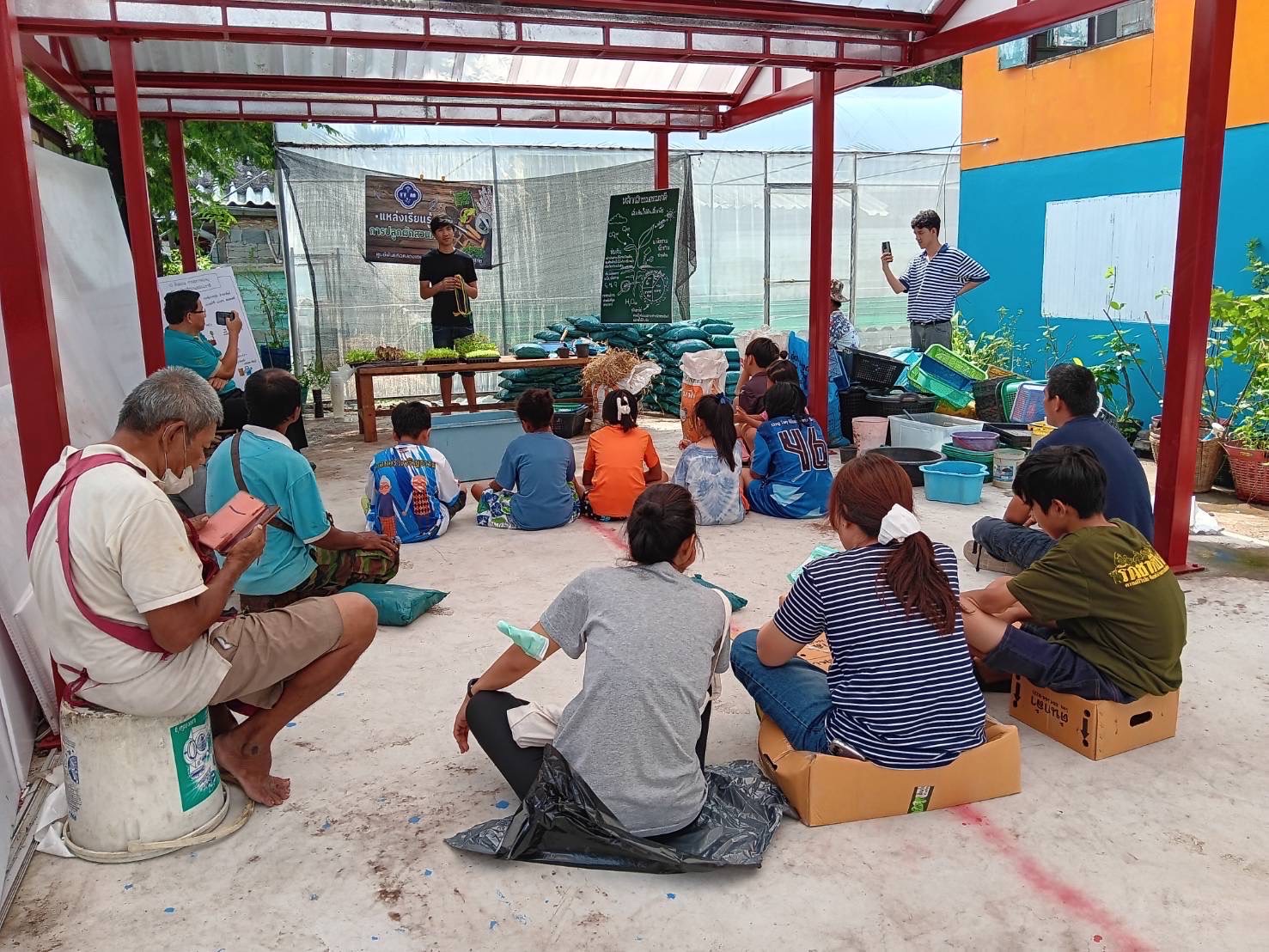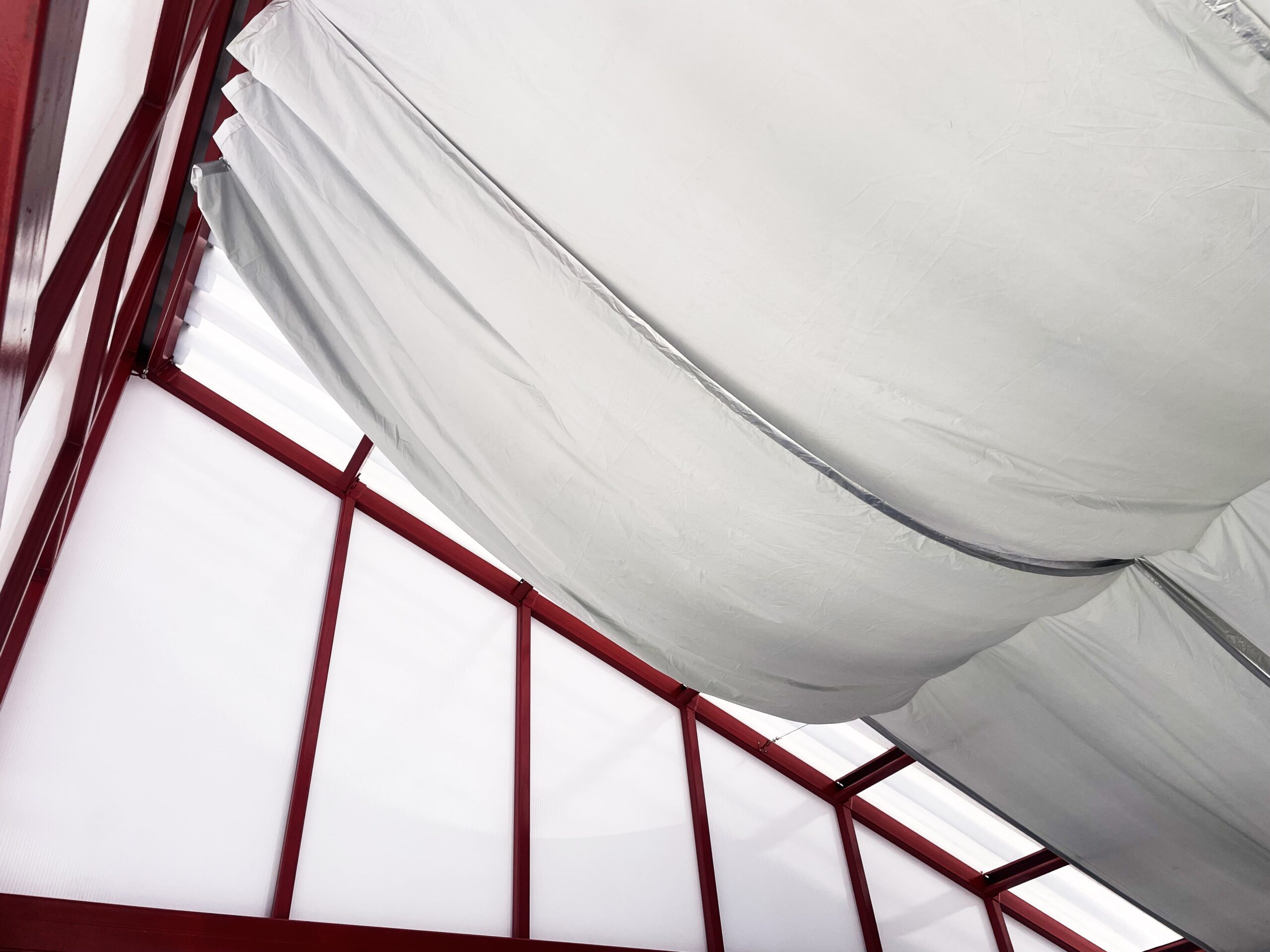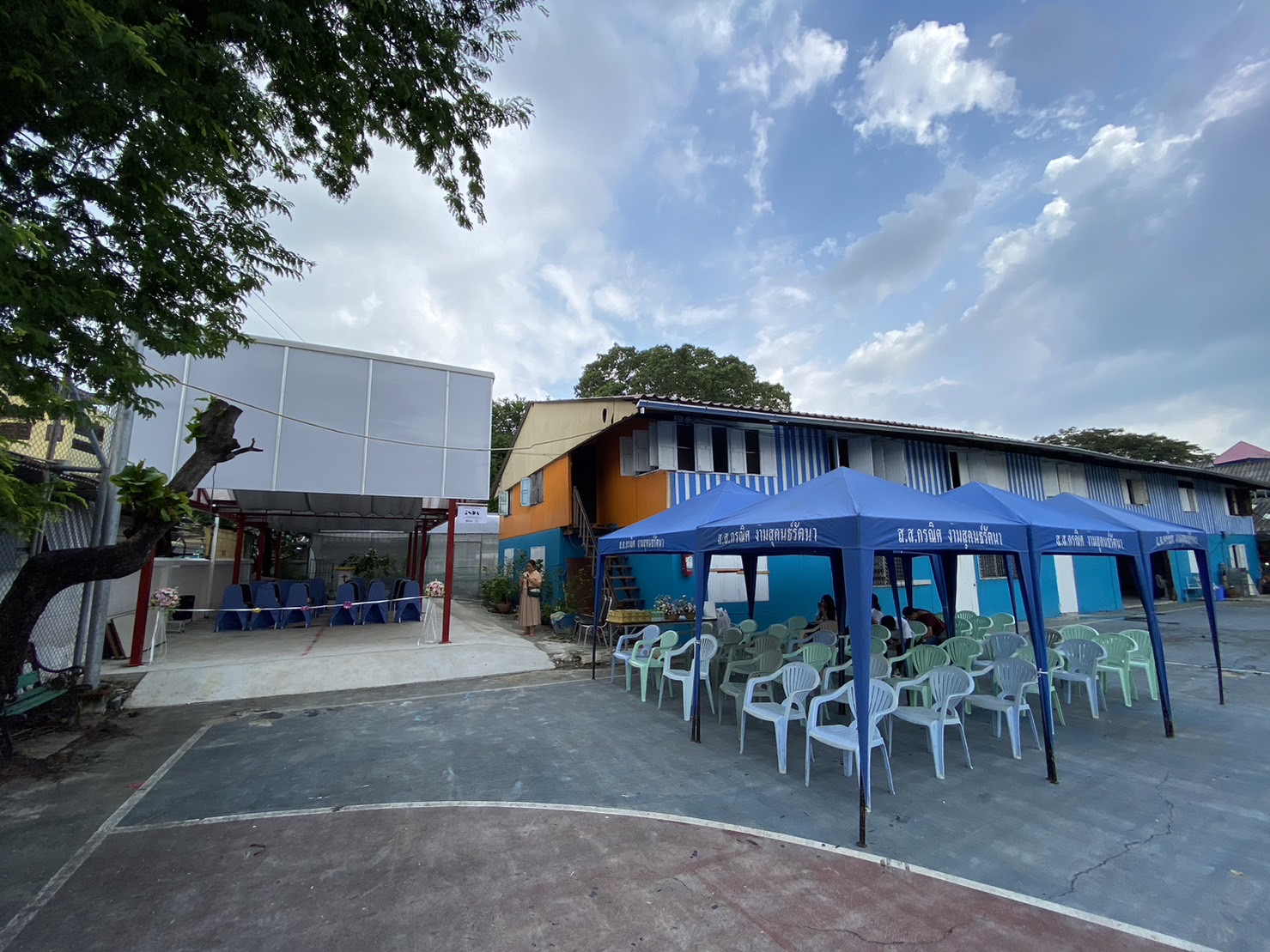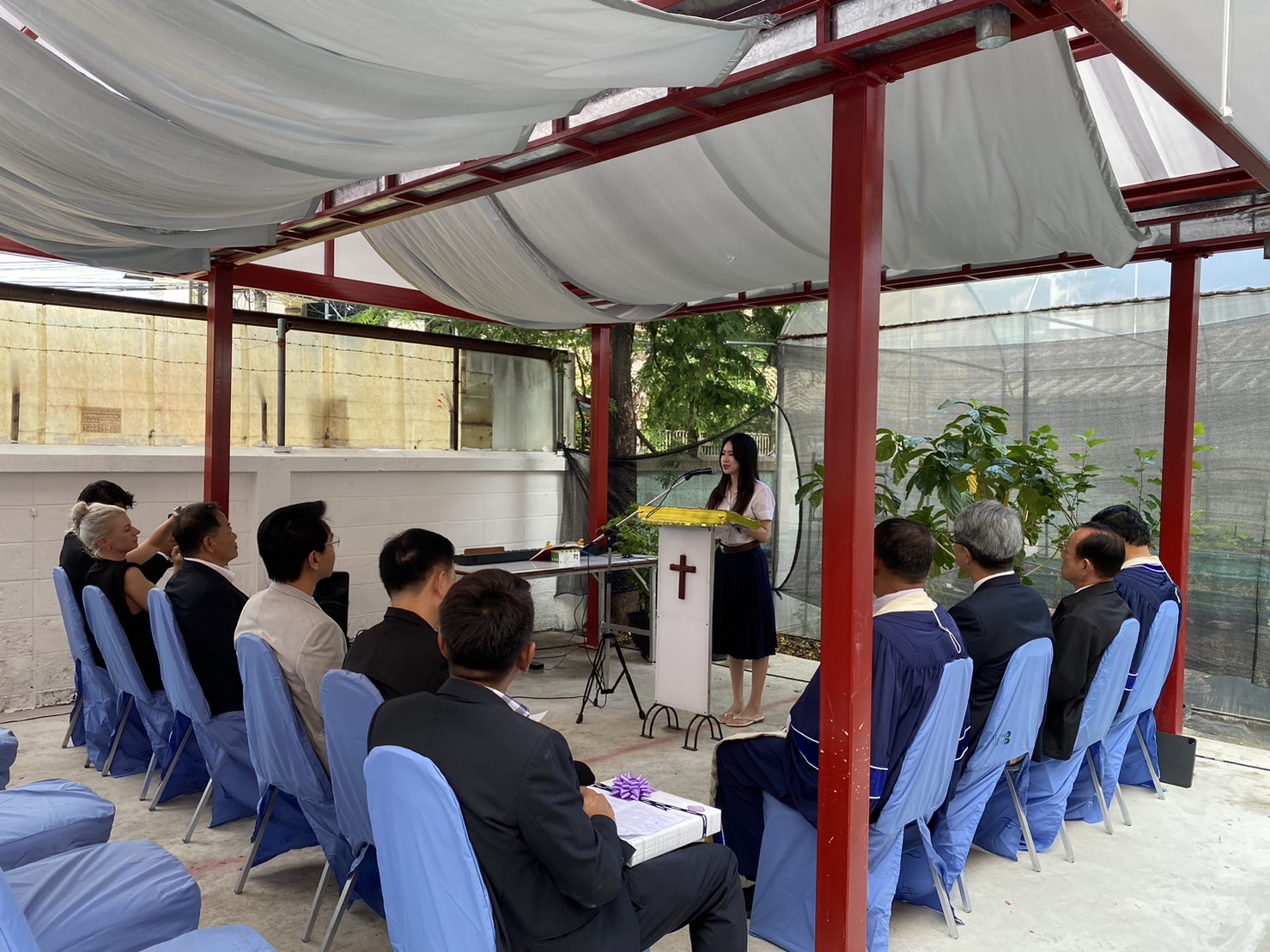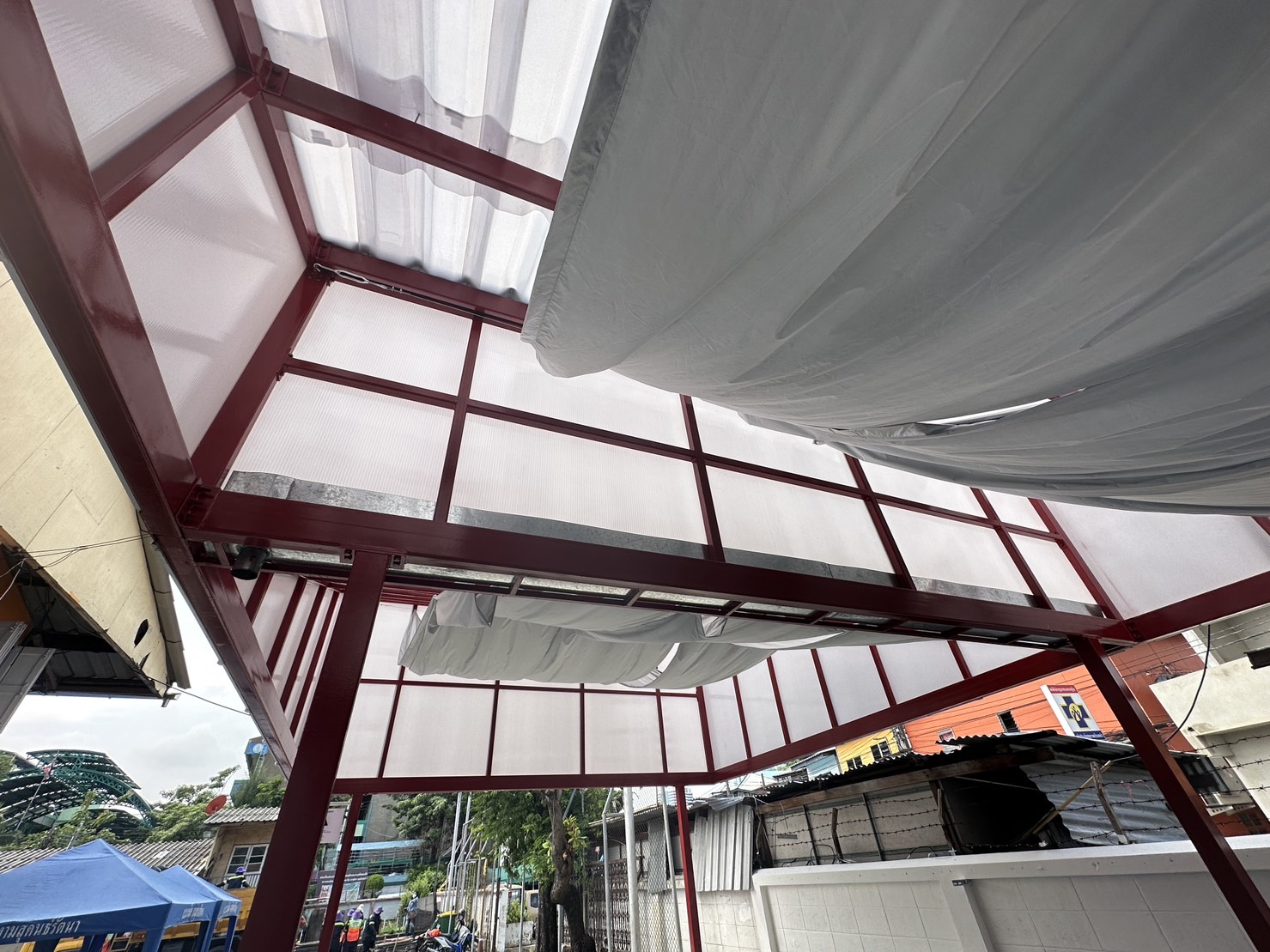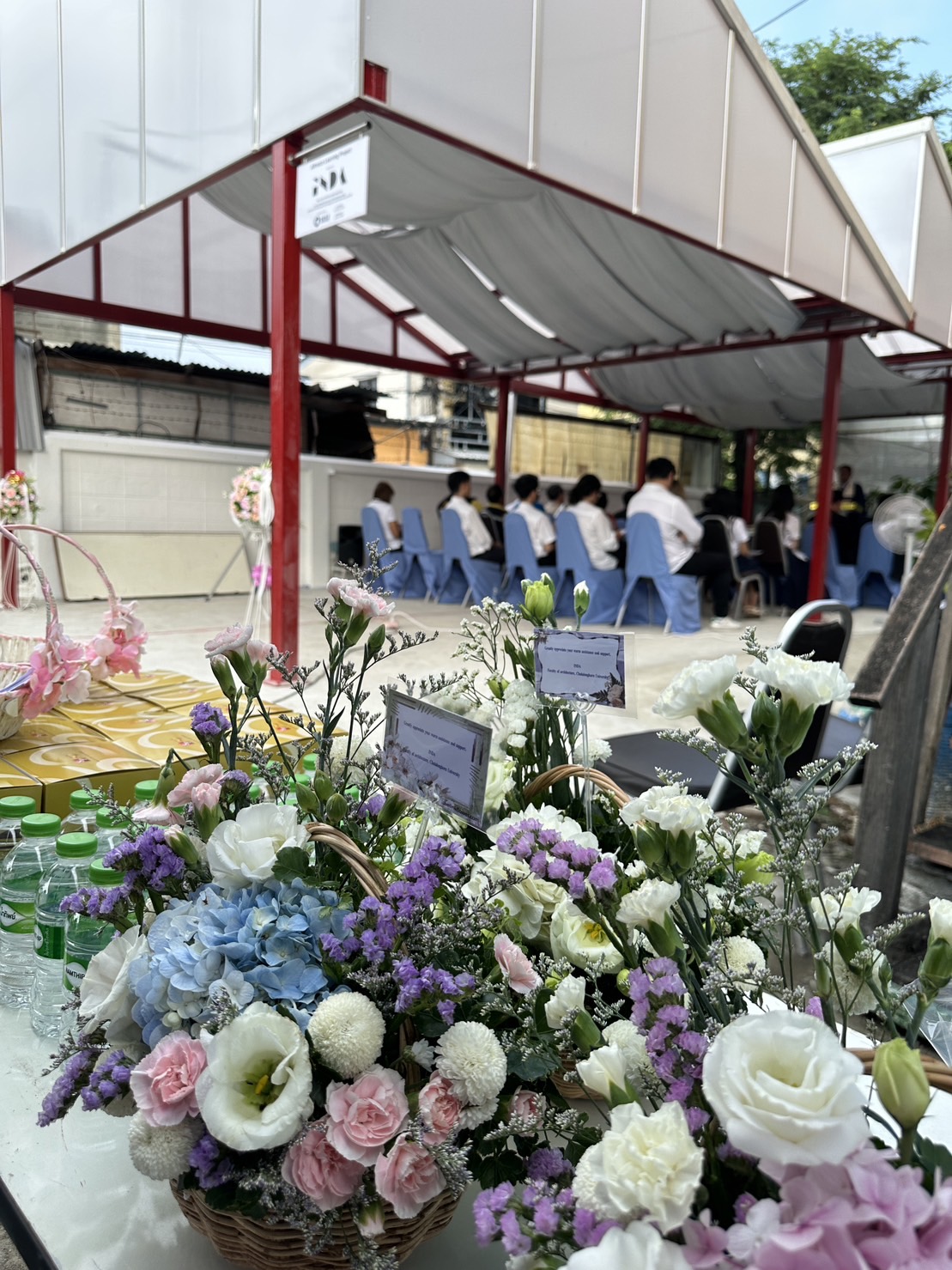The project is located within the property leased by the Bangkok Vocational School in Khlong Toei district, Bangkok. It is open to local pupils of the Klong Toei community.
The new open structure adjacent to the existing building provides additional outdoor learning space.
The design of the structure reacts to Bangkok weather conditions by using lightweight material, namely, textile fabric, to provide solar shading. This multifunctional area is now used by primary school students for both educational occupations during the day and leisure communal activities in the evening.
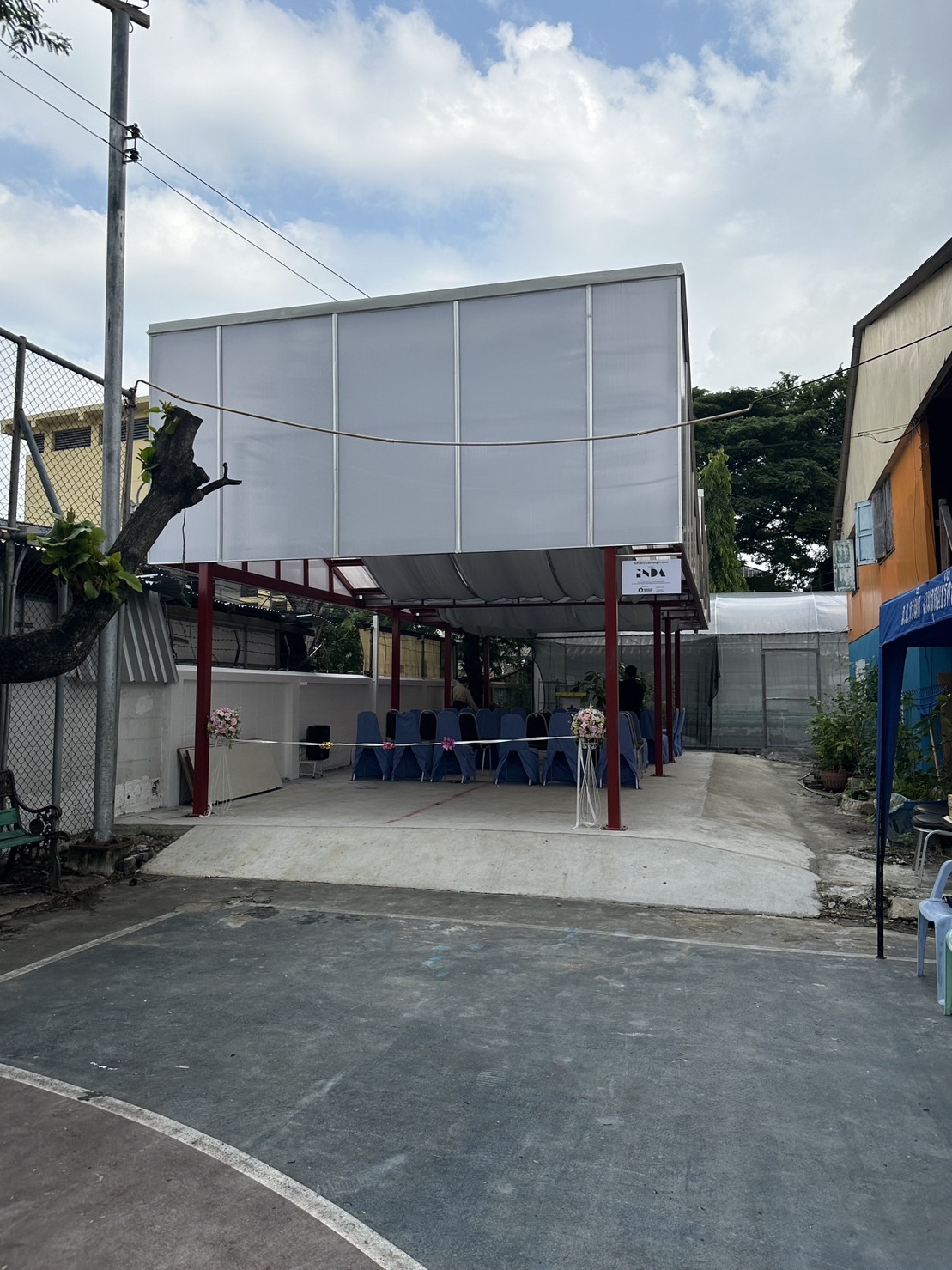
Alexandra Polyakova
Royce Universal Co., Ltd.
Modern Modular Co., Ltd.
Church of Christ in Thailand
Pattiya Apiwattangsakul
Tanakorn Changchun
Printr Chatjaroenchaikul
Nutticha Kaewthong
Sawanna Kularbwong
Punyaderek Punyahotra
Supitchaya Robru
Thornthan Sirichanyakul
Jiratchaya Sirinukoonchorn
Ditchapong Sivapiriyawong
Natcha Tanjaroen
Related Projects:
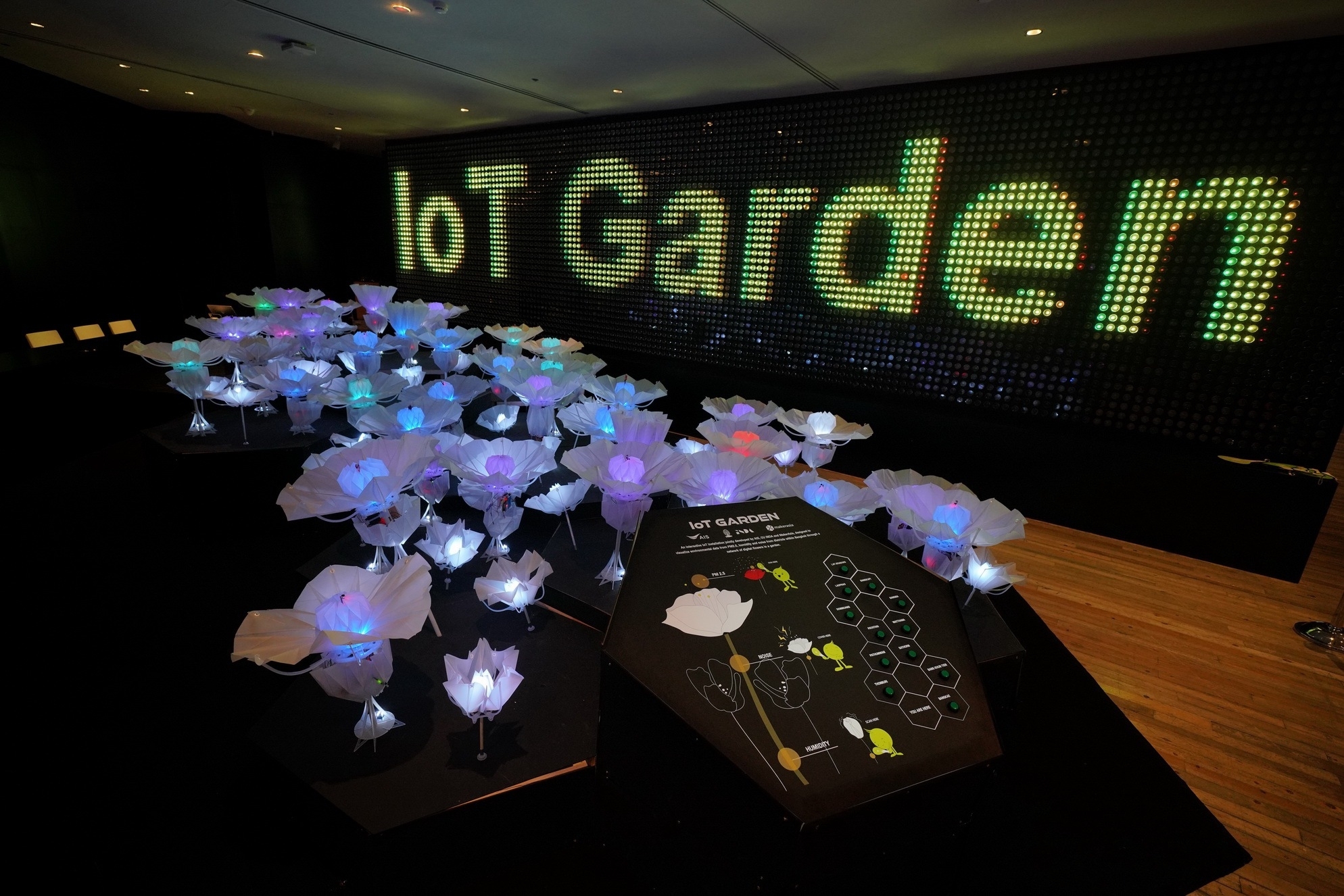
IoT Garden
Advanced Info Service (AIS) established the AIS Design Centre (AIS D.C.) as a new venture to welcome startups and anyone interested in design and creative endeavors. At the entry of AIS D.C., an open area is available for the public to view services and information collected via Internet of Things (IoT) devices connected through the AIS network such as weather, humidity, traffic, etc. AIS sought to explore an experimental installation that could visualize or make tangible some of this digital data while providing some on-site interaction that would encourage physical engagement. This interactive experience would be a pilot project that could possibly be duplicated or expanded upon to include additional kinds of information or other locations in the near future. Students worked closely with the AIS IoT team and the project assistants to design and construct an interactive installation as a standalone object at the entry hall area of AIS D.C. The resulting design visualized environmental data including PM2.5, humidity, and noise from twelve districts within Bangkok through a network of digital flowers in a garden.

Mass & Void
The aim for this project is to interrogate the interrelationships between machine tools, machine instruction, material behavior, and geometry, more specifically developing machine fabrication interfaces that target foam as a material. Most plastics are liquids that are molded or formed into surfaces. Foam, however, is ‘cast’ in the form of blocks that are later cut or milled into shape with computer-controlled machines. Though lightweight, foam is solid and brittle rather than thin and flexible in its nature. It favors mass and void relationships rather than surfaces. In fact, a piece of white high-density foam sculpted by a hot wire may have a material sensibility that is closer to chiseled stone than to a typical consumer product made from plastic. Foam, though technically a plastic, seems to have a lot in common with the most archaic of materials in architecture. Like stone, foam can be processed to adopt visual qualities from other materials. It can indeed be shaped to look massive and chunky, like stonework, but also soft and supple, like the draping in a baroque marble sculpture. The design investigation will focus on developing machine logics that draw inspiration from the projective geometries, the poché, and its relationship to mass and void to create architectural details, seating, or wall mounted shelving systems.
